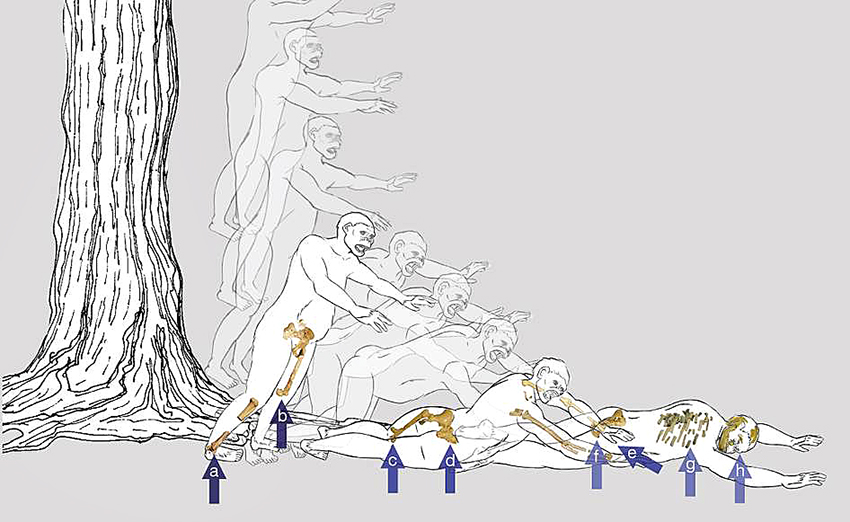UT anthropology professor John Kappelman’s talk, “Solving a 3.2-Million-Year-Old Mystery: How Lucy Died” packed every seat in Welch Hall and detailed his team’s conclusion that Lucy, the world’s most famous human ancestor, died from falling out of a tree. The talk, held last Friday, is the latest installation of the Hot Science Cool Talks series hosted by the UT Environmental Science Institute.
In 1974, paleoanthropologist Donald Johanson unearthed a 3.2 million year old partial skeleton of a female Australopithecus afarensis, a primate closely related to humans and chimpanzees. The skeleton, called Lucy, was over 40 percent complete and has revealed considerable information about human evolution and how early human ancestors lived.
“Lucy from the waist down is very similar to humans, but other characteristics, like her curved fingers, she shared with chimps,” Kappelman said.
The scientific community is torn on whether Lucy’s curved fingers and toes were inherited traits with no functional significance or if they imply she was a tree climber. Kappelman said Lucy’s anatomy not only reveals she lived in trees, but that she died falling from one.
Lucy’s relative bone strength was one of the main points of evidence that she climbed trees, according to Kappelman. His lab used CT scans, or high-resolution x-rays, to study Lucy’s bone properties. He said he believes her strong humerus bone, or upper arm, gave her the ability to climb trees.
“Bones respond dynamically to forces during the life of the individual, this is not something that is inherited,” Kappelman said. “We applied basic bone biology to Lucy. While diminutive in size, we see that Lucy is built with a very strong humerus bone. She’s like a super chimp.”
Kappelman went on to explain that Lucy’s right humerus bone was discovered shattered in several pieces, some the size of a fingernail clipping. Lucy also suffered major breakage in other parts of the body, including a fracture in her knee. Kappelman’s research concluded that Lucy’s humerus bone exhibited a four-part fracture. Kappelman said this type of fracture is seen today in two events: car accidents and falls.
“This (fracture) happens to older people with less bone mass and younger people with healthy bones who suffer a high energy impact,” he said. “There weren’t any cars in Lucy’s time, and since Lucy is a bone-healthy individual, it had to be high energy.”
Some scientists claim that Lucy’s bone fragmentation resulted from a high energy flood, but Kappelman said paleoclimatologists, scientists who study ancient climate, claim there is no evidence that a flood occurred at that time. Kappelman said by studying Lucy’s environment, which scientists say was a wooded savanna, his team determined trees were the likely cause for a high energy impact.
“Chimps can climb to extreme heights, up to 14 meters,” he said. “A fall from this height would have a velocity of about 35 miles per hour.”
Kappelman also determined the humerus fracture to be perimortem, or happened near death. He added that this is a rare injury seen today in events like lightning strikes.
“This unique signature of injury tells us that Lucy was conscious when she hit the ground and she stretched out her arms to break the fall,” he said.
According to Kappelman, Lucy hit the ground knee-first. He said death quickly followed after Lucy suffered major internal injuries.
“We’ve all fallen … we all know what that’s like,” Kappelman said. “Lucy is remarkable because she’s the only fossil I’ve worked with who I could guess her last thought before she died. At that moment I was overwhelmed with empathy. In understanding her death, I really understand her life.”












